Datasheet
Year, pagecount:2010, 7 page(s)
Language:English
Downloads:2
Uploaded:October 04, 2018
Size:490 KB
Institution:
-
Comments:
Miklós Zrínyi National Defence University
Attachment:-
Download in PDF:Please log in!
Comments
No comments yet. You can be the first!Most popular documents in this category
Content extract
Source: http://www.doksinet AARMS EDUCATION Vol. 9, No 1 (2010) 117–123 Stressors leading to teacher burnout in adult education and ways of prevention helping the language teacher GABRIELLA KOVÁCS Miklós Zrínyi National Defence University, Budapest, Hungary Teacher burnout is a problem that receives more and more attention in psychology indicating that work stress may result in emotional exhaustion and burnout. There are several stressors influencing educators’ or teachers’ work that lead to the different phases of burnout. With prevention thought the process can be stopped and teacher burnout avoided. The nature and phases of the burnout syndrome Emotional exhaustion and burnout are typical problems of professions that are related to interpersonal communication, or people working in the helping professions. Counsellors, musicians, artists, doctors, soldiers are all exposed to stress and burnout. Experiencing the stress of professional educators teachers are also prone to
burnout. H. J FREUDENBERGER defined burnout as physical, emotional and mental exhaustion resulting from chronic emotional burden. It is accompanied by the feeling of hopelessness, incompetence, the loss of objectives and ideals and is characterized by negative attitudes related to one’s own personality and profession as well as those of others.1 In the present essay I am focusing on the issue of teacher burnout and the prevention techniques as well as the possible treatment of teacher burnout. “Psychologists Herbert Freudenberger and Gail North have theorized that the burnout process can be divided into 12 phases, which are not necessarily followed sequentially: • a compulsion to prove oneself • working harder • neglecting one’s own needs • displacement of conflicts (the person does not realize the root cause of the distress) • revision of values (friends or hobbies are completely dismissed) • denial of emerging problems (cynicism and aggression become apparent) •
withdrawal (reducing social contacts to a minimum, becoming walled off; alcohol or other substance abuse may occur) Received: May 11, 2010 Address for correspondence: GABRIELLA KOVÁCS E-mail: kovacs.gabriella5@upcmailhu Source: http://www.doksinet G. KOVÁCS: Stressors leading to teacher burnout • behavioural changes become obvious to others • inner emptiness • depression • burnout syndrome”.2 SAROLTA ÓNODY refers to EDELWICH BRODSKY and GEORG E. BECKER when dividing the process of burnout into 5 phases: 1. idealism 2. realism 3. stagnation or disillusion 4. frustration 5. apathy3 These five phases above can be recognized related to teachers and be noticed, cured or even prevented prior to the burnout process or the apathy phase. Discussing teacher burnout KOCSIS points out that the most endangered professions are the ones where interpersonal processes are bipolar or “when solving a problem the conscious and active cooperation of another person is required, and if
that cooperation cannot be realized () the situation will result in stress.”4 The stressors When analysing the process leading to teacher-burnout it is essential to have a closer look at the stressors the recognition and cure of which may help prevent the phase of apathy. Generally speaking, the main stressors for a teacher are follows: • The low social status of the teachers’ profession • Poor career opportunities • Society’s expectations • Work conditions • Lack of equipment and resources • Lack of team work with colleagues.5 The main focus of this essay is the burnout syndrome of teachers involved in adult education especially language teachers who teach military terminology. Most language teachers working in this field are civilians. It is important to review the factors that may cause burnout for them in the long run. They may face the following stressors: Culture shock. Culture shock derives from the fact of being a civilian teacher, in most cases a woman,
having to cope with the difficulties of a primarily men-dominated classroom, teaching military terminology to an internationally diverse audience. The situation can lead to burnout if it occurs as chronic stress. 118 AARMS 9(1) (2010) Source: http://www.doksinet G. KOVÁCS: Stressors leading to teacher burnout All the factors mentioned here can cause psychic strain just like the fact that the behavioural culture of a civilian teacher having been educated at a civilian university is completely different from that of a military person. Working under constant performance pressure the soldier or officer behaves according to military behavioural norms, of which discipline and strictness are the most important ones. The teacher will follow a completely different pattern. As an educator his/her most important behavioural features will be patience, attention, tolerance and empathy – that is something completely different from the cultural norms of a military environment. Excessive
expectations of students. Students may have excessive expectations towards teachers when they would like to be prepared to a certain exam-level for which preparation time is too short. The superiors of many military officers expect their subordinates to pass certain levels of the STANAG examination regardless of the language level of the officers at the beginning of the language course. Experience shows that during a language course of about 300 lessons the “language level” of a student cannot be improved by one full STANAG level. If the student is at STANAG level 2 at the beginning of the language course, s/he might reach the level of 2.5 or 275 the maximum in the 4 skills of the STANAG exam However s/he is going to expect the teacher to prepare him for level 3 in order to fulfil the superior’s expectations or orders never letting the superior know about the incongruence between the false expectations and his actual possibilities in improvement within such a short time span. In
most cases the student is afraid of losing his/her job without passing a certain level of the STANAG examination or would like to participate in a mission for which a certain STANAG exam is required. S/he could pass that exam, but would need another course to be able to do so. In these cases the excessive expectations the language teacher is faced with might lead to stress, since s/he must have empathy for his/her students concerning the problems described above. The students’ expectations and the pressure s/he feels could be reduced if the student had the possibility to have a realistic picture of his/her language level at the exam. That objective would be achievable with multi-level testing, where the exam tasks are gradually getting more complex, thus making it possible to be successful at different levels in the different skills. Unfortunately the Hungarian system is single level testing, so the students have to apply for one certain level and if they fail that certain level they
have failed the exam itself. Excessive expectations on behalf of the management of the school. The teacher has to face the situation like this: if a student applies e.g for STANAG level 3, he either passes or fails it, but if he fails level 3, he cannot get a level 2 certificate. So what happens is that students who would like to have either level 2 or level 3 are going to AARMS 9(1) (2010) 119 Source: http://www.doksinet G. KOVÁCS: Stressors leading to teacher burnout apply for both levels in the four skills. Even if we set aside the students’ exhaustion and the resulting difficulty of taking two different levels one after the other, the teacher has to face the possibility of having an unfavourable statistical data, which is a result of a relatively new phenomena, i.e the students’ trial-and-error attitude After the exam results are revealed, the statistical data will show how successful the preparation for the language exam has been. When the new language course begins the
head of the school can expect the teachers to improve those statistics. As a result of the factors mentioned above this expectation is impossible to fulfil if the student doesn’t apply for the STANAG level which is in agreement with their knowledge and improvement possibilities. Workload. The compulsory number of lessons a teacher has to teach in an academic year is increasing. A very common thought is that the time the teacher spends in the classroom is the time s/he spends working. This belief doesn’t take into consideration the time needed for preparation, correcting homework, developing materials for his/her own lessons, etc. Increasing the number of compulsory lessons takes time away from the activities necessary to deliver a successful lesson in the classroom. Number of students. The number of students in one group tends to be rather high, which can be especially problematic if their knowledge not homogeneous enough. The teacher is faced with the problem of teaching a number
of students that is not ideal to achieve the objectives set by either their superiors or the students themselves (see above). If some of the students in the group are “weaker” than the others, but cannot form another, smaller group of students, and because of administrative constraints and restrictions they have to stay in the group where they do not actually fit, they will not be able to keep up with the course. Eventually they will completely be lost and lag behind the rest of the group for good. The teacher will try, in vain, to involve them in the learning process, but since it is not possible, s/he will have a more and more strengthening “I am not OK” feeling. The sub-domains of burnout As a result of the process teachers may suffer from burnout in one or all of the three different sub-domains that WOOD and MCCARTHY mentions referring to MASLACH and JACKSON.6 The sub-domains are depersonalization, reduced personal accomplishment and emotional exhaustion. “In particular,
depersonalization may be expressed through poor attitudes towards students and work environment.”7 The reason for this is that teachers spend most of their working hours either preparing for their lessons on their 120 AARMS 9(1) (2010) Source: http://www.doksinet G. KOVÁCS: Stressors leading to teacher burnout own or interacting mainly with their students. This fact has to be taken into consideration when discussing prevention possibilities. Of course teachers do not necessarily have to get to the stage of total burnout. There are several ways to prevent teacher burnout and it is always the best idea to identify and prevent it before it develops into a serous medical case. Levels of prevention interventions There are three levels of prevention interventions: “(a) Primary prevention, where the goal is to reduce the incidence of new cases of a disorder, (b) secondary prevention, where the goal is early identification and treatment of symptoms before they turn into a full-blown
disorder, and (c) tertiary prevention, where persons who have recently suffered a disorder receive some type of intervention to prevent relapse.”8 In the situation that I am focusing on (i.e the situation of teachers in adult education and especially teachers of military terminology) I would like to draw attention to the stressors listed above. Eliminating them may prevent teacher burnout Institutional help is the most important factor in prevention. Its essential role has already been pointed out in a former publication.9 The importance of teacher training Ensuring training possibilities is crucial in this process. There are several ways of training teachers. Publishing houses have regular annual conferences where plenary speeches give the frame for further topic-focused workshops. These conferences last one or two days. There are also short focus trainings organized by publishing houses, where workshops concentrate on one certain topic e.g the use of digital whiteboards In the
military environment the most important training possibility is the 2-weeklong international Military Terminology Teacher Training Seminar (MTTTS) where teachers of military English are trained in terminology as well as general and military related methodology. Military briefings are followed by methodology workshops and the main methodology focus points of these seminars are lesson planning and materials development. There are several reasons why teacher training can function as the primary device in the prevention of teacher burnout. First of all, it can serve as the primary stress management tool for a civilian teacher especially when the teacher is a woman coming from a civilian environment to teach in the military.10 AARMS 9(1) (2010) 121 Source: http://www.doksinet G. KOVÁCS: Stressors leading to teacher burnout Teacher training can relieve culture shock if the teacher learns about the military behavioural traditions, has the possibility to learn military terminology,
receives training in military-related methodology and learns about intercultural communication. This way the international environment of military officers in the classroom becomes less stressful for him or her. Training can also serve to eliminate the “I am not good enough” feeling. When the teacher receives training in military terminology or methodology related to it, s/he gets more confident and can get rid of the feeling of diminishing competence. Training can create new social environment. It is important especially if the teacher has the feeling of depersonalization mentioned above. The training sessions especially workshops can offer the possibility of meeting other professionals and discuss issues of mutual interest, share problems, seek solutions to them together. Teacher training can provide teachers with tips and techniques different from that of the traditional ones, methodology that has more training elements in it, thus changing group dynamics in the classroom and
adding humour to the language lessons. Summary Teacher-burnout is the result of the chronic perception that the teacher is unable to cope with the daily demands of school life. There are several factors that play a role in developing burnout such as culture shock, excessive expectations of students, excessive expectations of the institution, the feeling of being overwhelmed with a heavy workload or the size of the language group. Early detection of the symptoms and prevention is crucial to hindering the development of burnout. Conclusion In case the symptoms of teacher burnout are identified early enough – before they turn into fully developed burnout – and different prevention techniques especially those of primary prevention are employed, the stressors resulting in teacher burnout can be diminished or even eliminated. In my view teacher training is one of the most efficient devices in prevention. References 1. H J FREUDENBERGER, Staff burnout 1974, Journal of Social Issues, 30 pp
159–165 2. http://enwikipediaorg/wiki/Burnout (psychology)#Phases 122 AARMS 9(1) (2010) Source: http://www.doksinet G. KOVÁCS: Stressors leading to teacher burnout 3. S ÓNODY: Kiégési tünetek (burnout szindróma) keletkezése és megoldási lehetőségei Új Pedagógiai Szemle, 2001/5, http://www.epaoszkhu/00000/00035/00049/2001-05-ta-Onody-Kiegesihtml 4. G G KOCSIS: Pedagógus-Burnout, http://bolcseszuni-miskolchu/pdf/burnoutpdf 5. KOCSIS, ibid 6. T WOOD & C MCCARTHY: Understanding and Preventing Teacher Burnout, http://www.ericdigestsorg/2004-1/burnouthtm 20090529 7. T WOOD & C MCCARTHY, ibid 8. T WOOD & C MCCARTHY, ibid 9. G KOVÁCS: Culture Shock and Stress for the Teacher during Language Lessons In manuscript 10. KOVÁCS, ibid AARMS 9(1) (2010) 123
burnout. H. J FREUDENBERGER defined burnout as physical, emotional and mental exhaustion resulting from chronic emotional burden. It is accompanied by the feeling of hopelessness, incompetence, the loss of objectives and ideals and is characterized by negative attitudes related to one’s own personality and profession as well as those of others.1 In the present essay I am focusing on the issue of teacher burnout and the prevention techniques as well as the possible treatment of teacher burnout. “Psychologists Herbert Freudenberger and Gail North have theorized that the burnout process can be divided into 12 phases, which are not necessarily followed sequentially: • a compulsion to prove oneself • working harder • neglecting one’s own needs • displacement of conflicts (the person does not realize the root cause of the distress) • revision of values (friends or hobbies are completely dismissed) • denial of emerging problems (cynicism and aggression become apparent) •
withdrawal (reducing social contacts to a minimum, becoming walled off; alcohol or other substance abuse may occur) Received: May 11, 2010 Address for correspondence: GABRIELLA KOVÁCS E-mail: kovacs.gabriella5@upcmailhu Source: http://www.doksinet G. KOVÁCS: Stressors leading to teacher burnout • behavioural changes become obvious to others • inner emptiness • depression • burnout syndrome”.2 SAROLTA ÓNODY refers to EDELWICH BRODSKY and GEORG E. BECKER when dividing the process of burnout into 5 phases: 1. idealism 2. realism 3. stagnation or disillusion 4. frustration 5. apathy3 These five phases above can be recognized related to teachers and be noticed, cured or even prevented prior to the burnout process or the apathy phase. Discussing teacher burnout KOCSIS points out that the most endangered professions are the ones where interpersonal processes are bipolar or “when solving a problem the conscious and active cooperation of another person is required, and if
that cooperation cannot be realized () the situation will result in stress.”4 The stressors When analysing the process leading to teacher-burnout it is essential to have a closer look at the stressors the recognition and cure of which may help prevent the phase of apathy. Generally speaking, the main stressors for a teacher are follows: • The low social status of the teachers’ profession • Poor career opportunities • Society’s expectations • Work conditions • Lack of equipment and resources • Lack of team work with colleagues.5 The main focus of this essay is the burnout syndrome of teachers involved in adult education especially language teachers who teach military terminology. Most language teachers working in this field are civilians. It is important to review the factors that may cause burnout for them in the long run. They may face the following stressors: Culture shock. Culture shock derives from the fact of being a civilian teacher, in most cases a woman,
having to cope with the difficulties of a primarily men-dominated classroom, teaching military terminology to an internationally diverse audience. The situation can lead to burnout if it occurs as chronic stress. 118 AARMS 9(1) (2010) Source: http://www.doksinet G. KOVÁCS: Stressors leading to teacher burnout All the factors mentioned here can cause psychic strain just like the fact that the behavioural culture of a civilian teacher having been educated at a civilian university is completely different from that of a military person. Working under constant performance pressure the soldier or officer behaves according to military behavioural norms, of which discipline and strictness are the most important ones. The teacher will follow a completely different pattern. As an educator his/her most important behavioural features will be patience, attention, tolerance and empathy – that is something completely different from the cultural norms of a military environment. Excessive
expectations of students. Students may have excessive expectations towards teachers when they would like to be prepared to a certain exam-level for which preparation time is too short. The superiors of many military officers expect their subordinates to pass certain levels of the STANAG examination regardless of the language level of the officers at the beginning of the language course. Experience shows that during a language course of about 300 lessons the “language level” of a student cannot be improved by one full STANAG level. If the student is at STANAG level 2 at the beginning of the language course, s/he might reach the level of 2.5 or 275 the maximum in the 4 skills of the STANAG exam However s/he is going to expect the teacher to prepare him for level 3 in order to fulfil the superior’s expectations or orders never letting the superior know about the incongruence between the false expectations and his actual possibilities in improvement within such a short time span. In
most cases the student is afraid of losing his/her job without passing a certain level of the STANAG examination or would like to participate in a mission for which a certain STANAG exam is required. S/he could pass that exam, but would need another course to be able to do so. In these cases the excessive expectations the language teacher is faced with might lead to stress, since s/he must have empathy for his/her students concerning the problems described above. The students’ expectations and the pressure s/he feels could be reduced if the student had the possibility to have a realistic picture of his/her language level at the exam. That objective would be achievable with multi-level testing, where the exam tasks are gradually getting more complex, thus making it possible to be successful at different levels in the different skills. Unfortunately the Hungarian system is single level testing, so the students have to apply for one certain level and if they fail that certain level they
have failed the exam itself. Excessive expectations on behalf of the management of the school. The teacher has to face the situation like this: if a student applies e.g for STANAG level 3, he either passes or fails it, but if he fails level 3, he cannot get a level 2 certificate. So what happens is that students who would like to have either level 2 or level 3 are going to AARMS 9(1) (2010) 119 Source: http://www.doksinet G. KOVÁCS: Stressors leading to teacher burnout apply for both levels in the four skills. Even if we set aside the students’ exhaustion and the resulting difficulty of taking two different levels one after the other, the teacher has to face the possibility of having an unfavourable statistical data, which is a result of a relatively new phenomena, i.e the students’ trial-and-error attitude After the exam results are revealed, the statistical data will show how successful the preparation for the language exam has been. When the new language course begins the
head of the school can expect the teachers to improve those statistics. As a result of the factors mentioned above this expectation is impossible to fulfil if the student doesn’t apply for the STANAG level which is in agreement with their knowledge and improvement possibilities. Workload. The compulsory number of lessons a teacher has to teach in an academic year is increasing. A very common thought is that the time the teacher spends in the classroom is the time s/he spends working. This belief doesn’t take into consideration the time needed for preparation, correcting homework, developing materials for his/her own lessons, etc. Increasing the number of compulsory lessons takes time away from the activities necessary to deliver a successful lesson in the classroom. Number of students. The number of students in one group tends to be rather high, which can be especially problematic if their knowledge not homogeneous enough. The teacher is faced with the problem of teaching a number
of students that is not ideal to achieve the objectives set by either their superiors or the students themselves (see above). If some of the students in the group are “weaker” than the others, but cannot form another, smaller group of students, and because of administrative constraints and restrictions they have to stay in the group where they do not actually fit, they will not be able to keep up with the course. Eventually they will completely be lost and lag behind the rest of the group for good. The teacher will try, in vain, to involve them in the learning process, but since it is not possible, s/he will have a more and more strengthening “I am not OK” feeling. The sub-domains of burnout As a result of the process teachers may suffer from burnout in one or all of the three different sub-domains that WOOD and MCCARTHY mentions referring to MASLACH and JACKSON.6 The sub-domains are depersonalization, reduced personal accomplishment and emotional exhaustion. “In particular,
depersonalization may be expressed through poor attitudes towards students and work environment.”7 The reason for this is that teachers spend most of their working hours either preparing for their lessons on their 120 AARMS 9(1) (2010) Source: http://www.doksinet G. KOVÁCS: Stressors leading to teacher burnout own or interacting mainly with their students. This fact has to be taken into consideration when discussing prevention possibilities. Of course teachers do not necessarily have to get to the stage of total burnout. There are several ways to prevent teacher burnout and it is always the best idea to identify and prevent it before it develops into a serous medical case. Levels of prevention interventions There are three levels of prevention interventions: “(a) Primary prevention, where the goal is to reduce the incidence of new cases of a disorder, (b) secondary prevention, where the goal is early identification and treatment of symptoms before they turn into a full-blown
disorder, and (c) tertiary prevention, where persons who have recently suffered a disorder receive some type of intervention to prevent relapse.”8 In the situation that I am focusing on (i.e the situation of teachers in adult education and especially teachers of military terminology) I would like to draw attention to the stressors listed above. Eliminating them may prevent teacher burnout Institutional help is the most important factor in prevention. Its essential role has already been pointed out in a former publication.9 The importance of teacher training Ensuring training possibilities is crucial in this process. There are several ways of training teachers. Publishing houses have regular annual conferences where plenary speeches give the frame for further topic-focused workshops. These conferences last one or two days. There are also short focus trainings organized by publishing houses, where workshops concentrate on one certain topic e.g the use of digital whiteboards In the
military environment the most important training possibility is the 2-weeklong international Military Terminology Teacher Training Seminar (MTTTS) where teachers of military English are trained in terminology as well as general and military related methodology. Military briefings are followed by methodology workshops and the main methodology focus points of these seminars are lesson planning and materials development. There are several reasons why teacher training can function as the primary device in the prevention of teacher burnout. First of all, it can serve as the primary stress management tool for a civilian teacher especially when the teacher is a woman coming from a civilian environment to teach in the military.10 AARMS 9(1) (2010) 121 Source: http://www.doksinet G. KOVÁCS: Stressors leading to teacher burnout Teacher training can relieve culture shock if the teacher learns about the military behavioural traditions, has the possibility to learn military terminology,
receives training in military-related methodology and learns about intercultural communication. This way the international environment of military officers in the classroom becomes less stressful for him or her. Training can also serve to eliminate the “I am not good enough” feeling. When the teacher receives training in military terminology or methodology related to it, s/he gets more confident and can get rid of the feeling of diminishing competence. Training can create new social environment. It is important especially if the teacher has the feeling of depersonalization mentioned above. The training sessions especially workshops can offer the possibility of meeting other professionals and discuss issues of mutual interest, share problems, seek solutions to them together. Teacher training can provide teachers with tips and techniques different from that of the traditional ones, methodology that has more training elements in it, thus changing group dynamics in the classroom and
adding humour to the language lessons. Summary Teacher-burnout is the result of the chronic perception that the teacher is unable to cope with the daily demands of school life. There are several factors that play a role in developing burnout such as culture shock, excessive expectations of students, excessive expectations of the institution, the feeling of being overwhelmed with a heavy workload or the size of the language group. Early detection of the symptoms and prevention is crucial to hindering the development of burnout. Conclusion In case the symptoms of teacher burnout are identified early enough – before they turn into fully developed burnout – and different prevention techniques especially those of primary prevention are employed, the stressors resulting in teacher burnout can be diminished or even eliminated. In my view teacher training is one of the most efficient devices in prevention. References 1. H J FREUDENBERGER, Staff burnout 1974, Journal of Social Issues, 30 pp
159–165 2. http://enwikipediaorg/wiki/Burnout (psychology)#Phases 122 AARMS 9(1) (2010) Source: http://www.doksinet G. KOVÁCS: Stressors leading to teacher burnout 3. S ÓNODY: Kiégési tünetek (burnout szindróma) keletkezése és megoldási lehetőségei Új Pedagógiai Szemle, 2001/5, http://www.epaoszkhu/00000/00035/00049/2001-05-ta-Onody-Kiegesihtml 4. G G KOCSIS: Pedagógus-Burnout, http://bolcseszuni-miskolchu/pdf/burnoutpdf 5. KOCSIS, ibid 6. T WOOD & C MCCARTHY: Understanding and Preventing Teacher Burnout, http://www.ericdigestsorg/2004-1/burnouthtm 20090529 7. T WOOD & C MCCARTHY, ibid 8. T WOOD & C MCCARTHY, ibid 9. G KOVÁCS: Culture Shock and Stress for the Teacher during Language Lessons In manuscript 10. KOVÁCS, ibid AARMS 9(1) (2010) 123
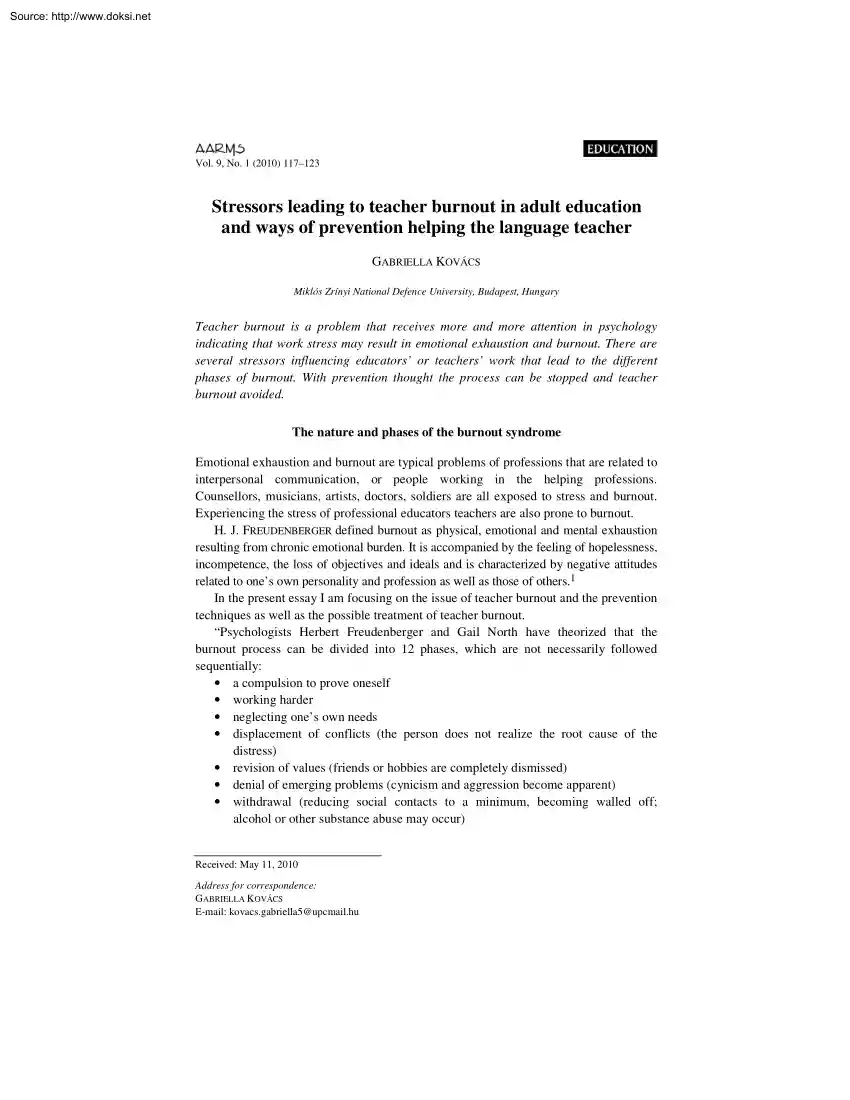
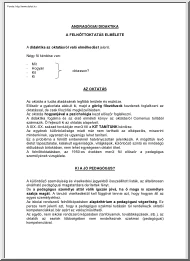
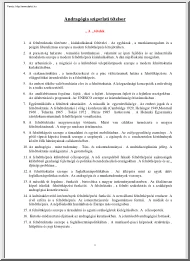
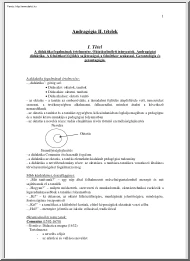
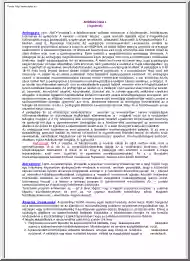
 When reading, most of us just let a story wash over us, getting lost in the world of the book rather than paying attention to the individual elements of the plot or writing. However, in English class, our teachers ask us to look at the mechanics of the writing.
When reading, most of us just let a story wash over us, getting lost in the world of the book rather than paying attention to the individual elements of the plot or writing. However, in English class, our teachers ask us to look at the mechanics of the writing.